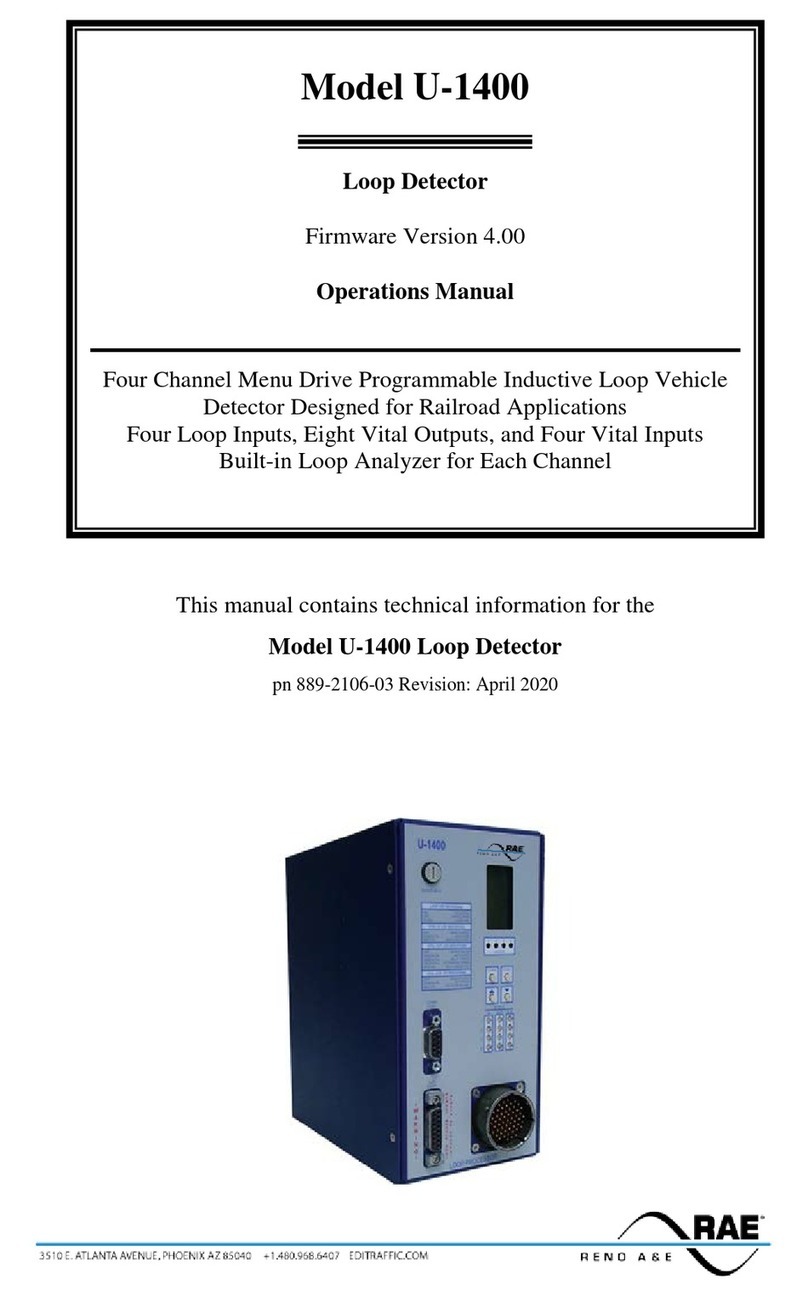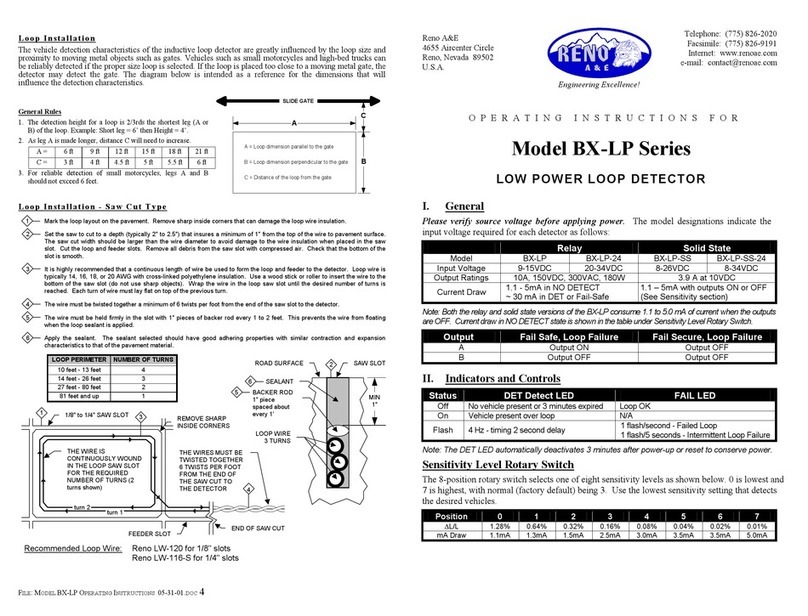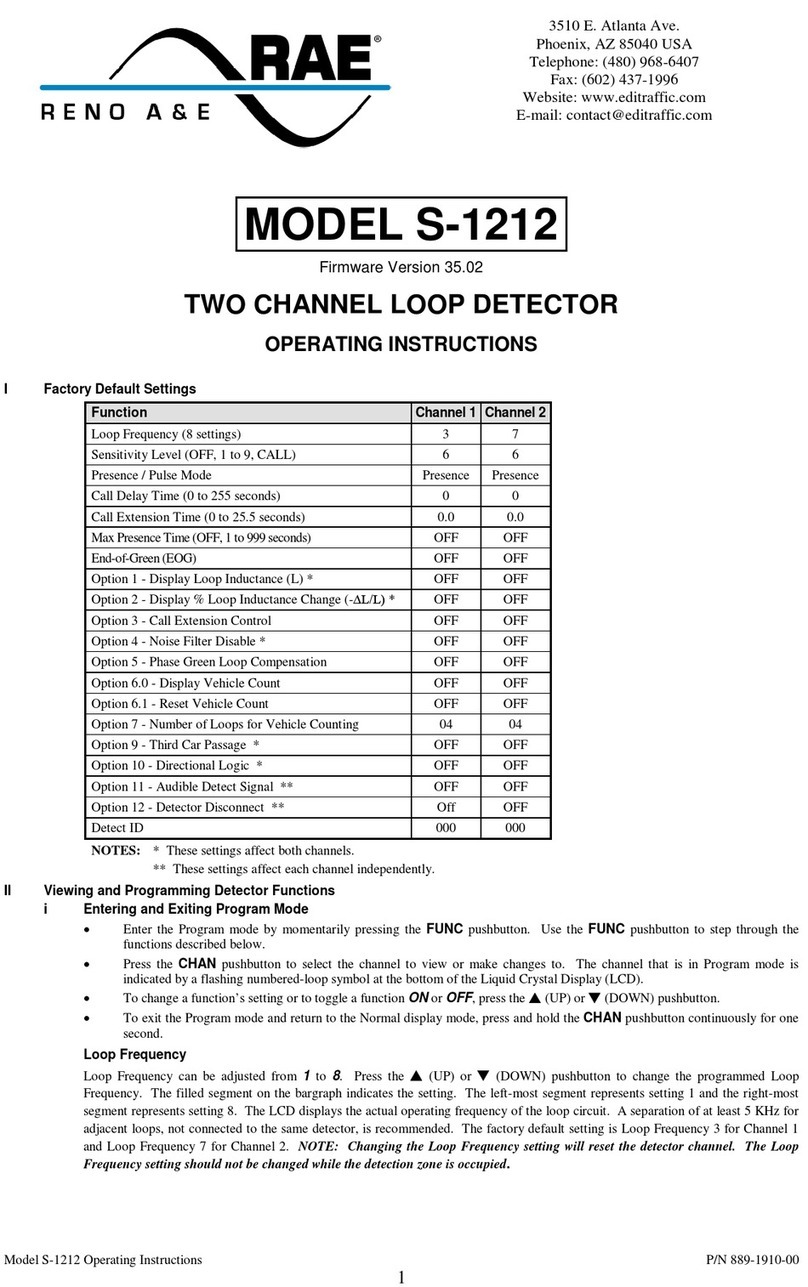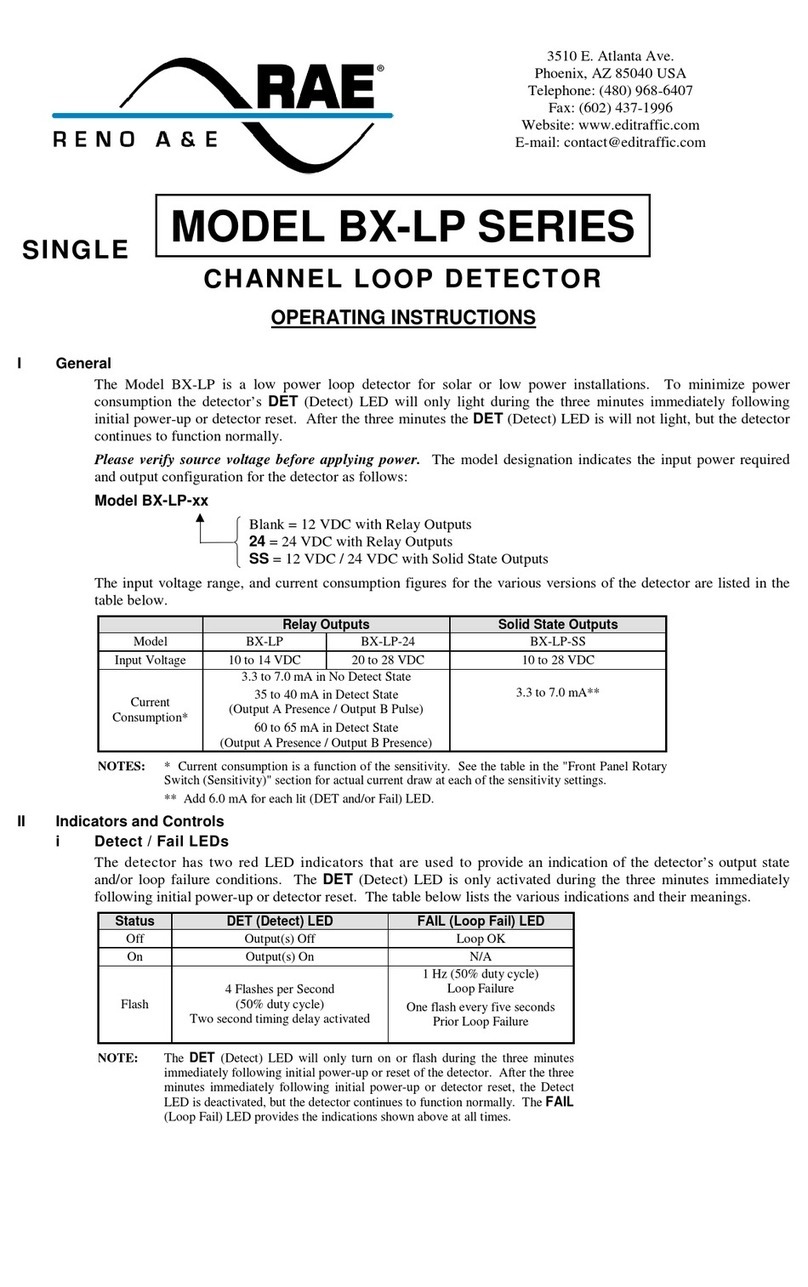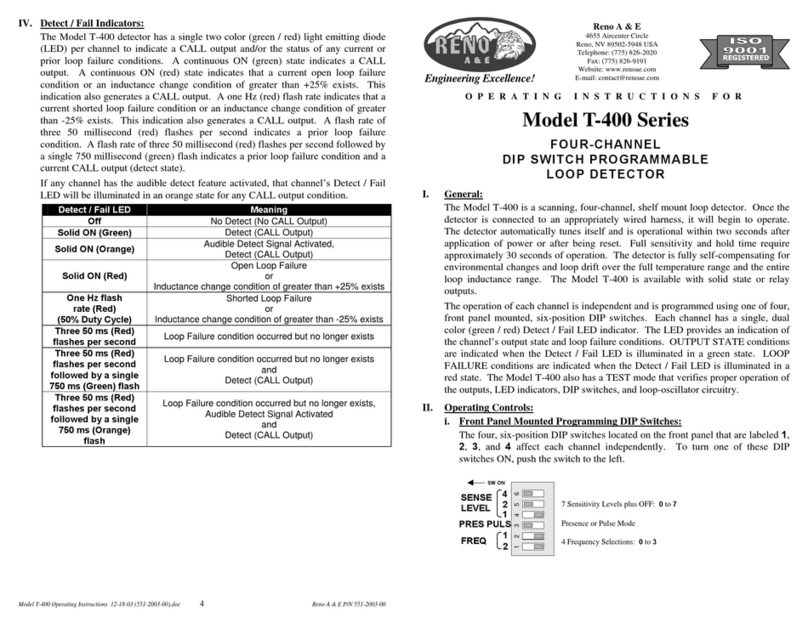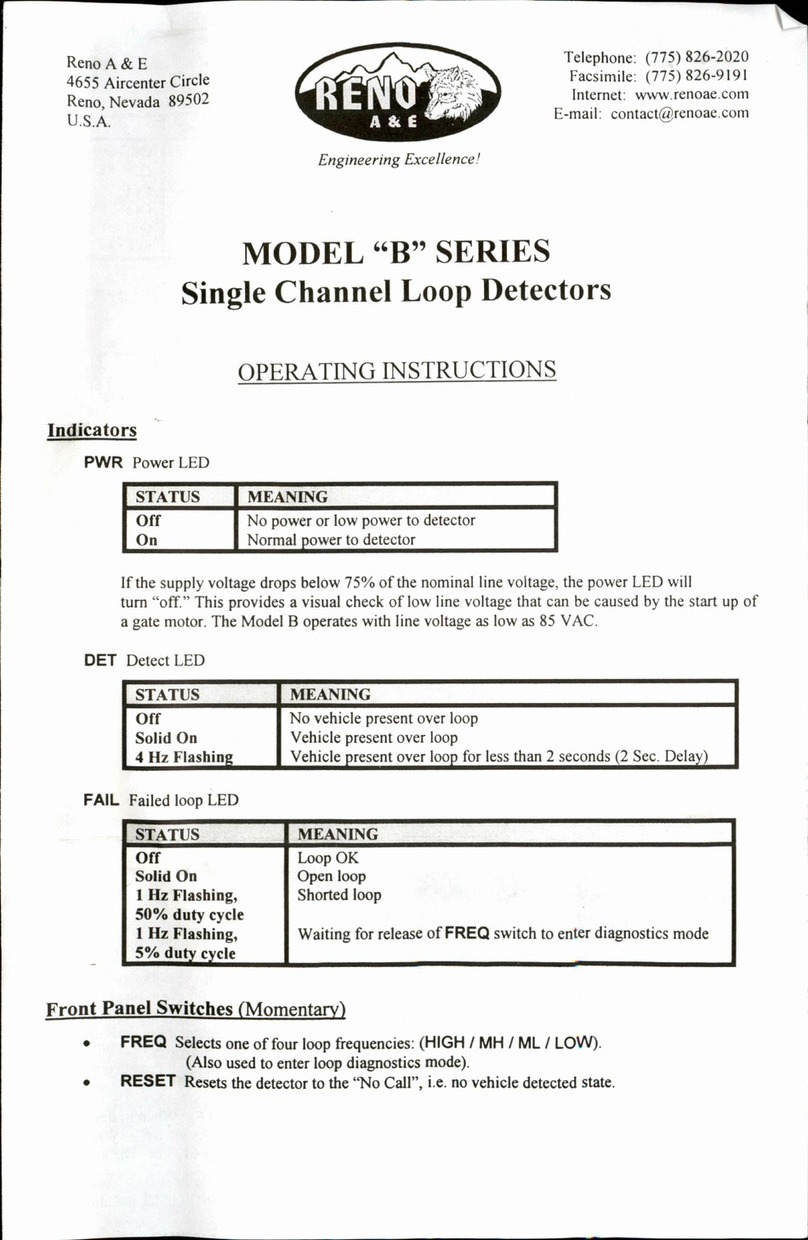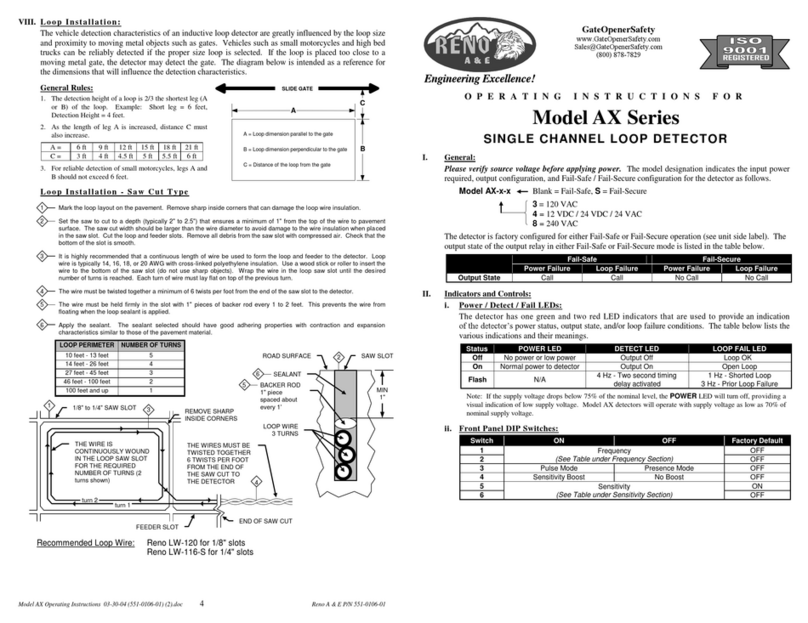Model B Series Rev. 03-14-2019 3P/N 551-0202-02
Relay B Pulse Mode (DIP Switch 6)
Relay B is the pulse output. Its pulse output mode is controlled by DIP switch 6. Relay B can be configured to
output a single 250 millisecond pulse when a vehicle enters the loop detection zone (Pulse-on-Entry) or when a
vehicle leaves the loop detection zone (Pulse-on-Exit). Pulse-on-Entry is selected when DIP switch 6 is OFF.
Pulse-on-Exit is selected when DIP switch 6 is ON. DIP switch 6 has no effect on Relay A (the presence output).
The factory default setting is OFF (Pulse-on-Entry).
NOTE: The setting of this DIP switch has no effect on the output mode of Relay B if DIP switch 8 is set to the
OFF position (Presence Mode Relay B). For additional details, refer to the Relay B Output Mode section on
page 3.
Presence Hold Time (DIP Switch 7)
Output A always functions as a presence output. DIP switch 7 can be used to select one of two presence hold
times; Limited Presence or True PresenceTM. Both modes provide a Call output when a vehicle is present in
the loop detection zone. True PresenceTM is selected when DIP switch 7 is OFF. If DIP switch 7 is ON, Limited
Presence is selected. Limited Presence will typically hold the Call output for about one to three hours. True
PresenceTM will hold the Call as long as the vehicle is present in the loop detection zone provided that power is not
interrupted or the detector is not reset. True PresenceTM time applies only for normal size automobiles and trucks
and for normal size loops (approximately 12 ft2to 120 ft2). The factory default setting is OFF (True PresenceTM
Mode).
Relay B Output Mode (DIP Switch 8)
Relay B has two modes of operation; Pulse or Presence. Its output mode is controlled by DIP switch 8. When set
to operate in Pulse Mode (DIP switch 8 ON), Relay B outputs a 250 millisecond pulse when a vehicle enters the
loop detection zone or when a vehicle leaves the loop detection zone. (See the Relay B Pulse Mode section on
page 2 for details.) When set to operate in Presence Mode (DIP switch 8 OFF), the output of Relay B is the same
as that of Relay A. (See the Presence Hold Time section above for details.) The factory default setting is ON
(Pulse Mode Relay B) unless dual presence (DP) operation is specified, in which case the factory default setting is
OFF (Presence Mode Relay B).
III. Call Memory
When power is removed for two seconds or less, the detector automatically remembers if a vehicle was present and a Call
was in effect. When power is restored, the detector will continue to output a Call until the vehicle leaves the loop
detection zone (loss of power or power dips of two seconds or less will not bring a gate arm down onto cars as they wait
at the gate).
IV. Failed Loop Diagnostics
The FAIL LED provides an indication of whether or not the loop is currently within tolerance. If the loop is out of
tolerance, the FAIL LED indicates whether the loop is shorted (one Hz flash rate) or open (steady ON). If and when the
loop returns to within tolerance, the FAIL LED will turn off to indicate that the loop fault condition has been corrected
and that the loop is once again within tolerance.
The Model B detector automatically stores the last loop failure type in non-volatile memory. To determine the type of
loop failure that has last occurred, press and hold the FREQ pushbutton for at least three seconds. When the FAIL LED
begins flashing at one Hz rate with a 5% duty cycle, release the FREQ pushbutton. The detector will then display the
last loop failure type detected (if any). This indication will be displayed one time for about fifteen seconds unless
terminated by pressing the RESET or FREQ pushbutton. The non-volatile memory used to store the last loop failure
type is automatically cleared each time it is interrogated.
